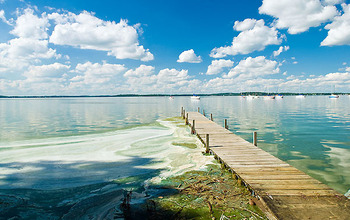
Research News
Discover that plants are influencing ecosystem’s recovery
January 29, 2020
Through research in the blast zone of Mount St. Helens, Evergreen State College scientists have discovered that plants are influencing the ecosystem’s recovery.
A new paper reporting the results, “Plant sex influences terrestrial-aquatic interactions,” was published in the journal Ecosphere by Carri LeRoy and her collaborators at the U.S. Forest Service and the Science Museum of Minnesota.
The research, funded by the National Science Foundation, was conducted at Mount St. Helens over the past two summers. It explores how streams in the region are recovering from the 1980 eruption.
The study shows that female willow trees grow closer to streams, contributing organic matter to stream systems. In a carbon- and nutrient-limited environment like a post-eruption landscape, that could affect how these streams function.
“The finding of significant differences between male and female plants on ecosystem function in Mount St. Helens opens up questions about how these differences influence overall ecosystem stability and function in other systems,” says Betsy von Holle, a program director in NSF’s Division of Environmental Biology.
LeRoy, who encourages students at Evergreen to pursue research careers, has co-authored many peer-reviewed scientific papers with undergraduate students. “It gives them opportunities to try out being a scientist,” she said. “We’re all making strides toward understanding the world.”
—
NSF Public Affairs,
researchnews@nsf.gov





